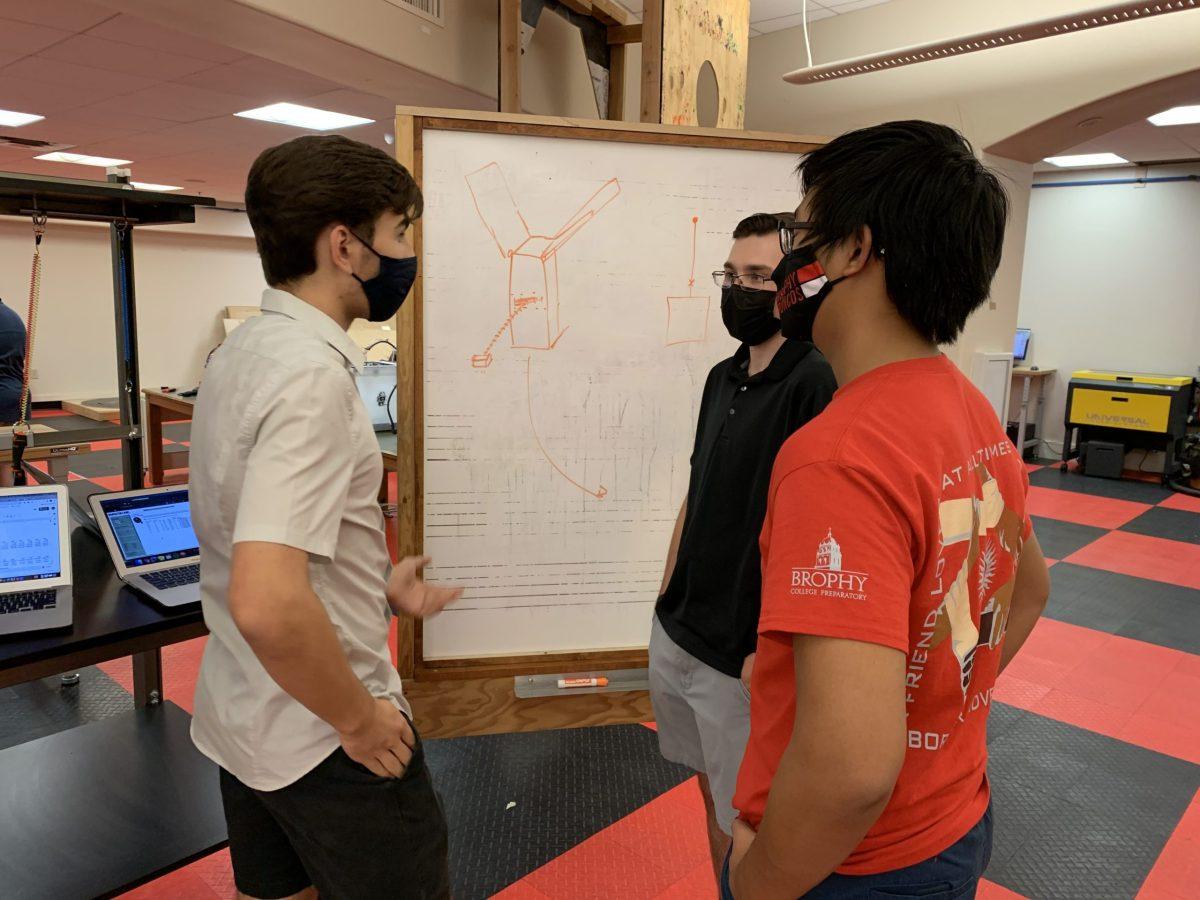By Edward Hoppensteadt ‘24
THE ROUNDUP
The Brophy Cube-Sat team is working on taking a big step in the study of dust patterns leading to Valley Fever cases in the American Southwest.
According to Mr. Mica Mulloy, a faculty advisor for the Cube-Sat team, “The Cube-Sat team is building a 20cm by 20cm by 10cm microsatellite that will study dust patterns around Earth from low Earth orbit in space.”
The team’s goal is to use the data to “Track and predict Valley Fever infections rates in the American Southwest,” Mr. Mulloy says.
The reasoning of their goal to control Valley Fever is due to the fact that it is a disease that has been rampant in America, especially in Southwestern states like Arizona. Mr. Mulloy spoke about this, saying, “It affects thousands of people a year and it can be fatal and what we know is that Valley Fever travels in dust.”
Mr. Mulloy spoke about the team’s main aspiration in sending a satellite, “Our hope is that if from space, we can track dust clouds by using a specialized camera and taking pictures of the American Southwest from space, the students can then correlate that data with Valley Fever infections and the Arizona Department of Health Services would provide,”
Regarding the short-term goals for the team, Mr. Mulloy said, “The whole project is a multi-year project. We are almost a year and a half into it and I think we’ve got another two to three years before we can launch the satellite.” He also added “The team’s spent the last year doing a lot of research and making contacts, both in the aerospace industry and NASA and Arizona Department of Health Services, Universities around the country that are also building CubeSats and studying Valley Fever. Figuring out how to best build a CubeSat and also figuring out how to use that and study Valley Fever back on Earth.”
The Cube Sat team’s goal is not one that is very cheap. As a result, the other goal of the team is to secure funding. They have applied for grants and are looking for sponsorship from NASA as well.
“We’ve made some contacts with some alumni that work for NASA,” Mr. Mulloy stated. Connecting with NASA to the cube sat up into orbit has been a goal since the beginning of this project.
The design process of the cube sat has been another challenge that the team has run into. They are working on a design that will stay in orbit and handle the speeds at which it is moving, all while it is recording data. The risk in the design factor is that you only have one shot to make it so that it can maintain itself and stabilize.
The speculated lifespan of the cube sat is, according to Mr. Mulloy “A few months to a year anything that is in orbit is really susceptible to radiation.” he continued, “There’s no atmosphere to protect it. It’s at the mercy of the sun and radiation and we hope it will last three months to a year.”
As long as everything goes to plan as it has been, the team can practically predict outbreaks and where future cases of Valley Fever will arise.
When asked about recent achievements, Mr. Mulloy said, “The students have been fantastic about moving with the plans and picking up where others left off when they graduated.”
Throughout this school year, continuing from the last, the Cube Sat team will continue to move forward and get closer to their goal.
















